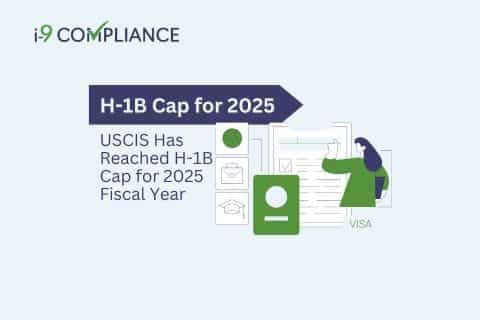USCIS Has Reached H-1B Cap for 2025 Fiscal Year

The U.S. Citizenship and Immigration Services (USCIS) has recently announced that it has received enough petitions to meet the annual cap of 85,000 H-1B visas for fiscal year 2025. This congressionally mandated limit includes the 65,000 visa numbers under the regular cap and the 20,000 H-1B visas reserved for holders of U.S. advanced degrees.
According to the USCIS, it will proceed to update the MyUSCIS accounts of employers or representatives for all unsuccessful entries with non-selection notices. After the agency provides these notifications, it will update the status of correctly submitted registrations. These accounts can expect the following status: “Not Selected: Not selected – not eligible to file an H-1B cap petition based on this registration.”
According to the USCIS, this update informs workers of whether they qualified to file for an H-1B visa this fiscal year. The agency stressed that this status would not impact any future immigration filings. In addition, the USCIS encouraged employers to save copies of these filings. Copies would ensure future access and prevent them from losing account access.
The USCIS received 479,953 registrations this fiscal year. However, the agency reported 470,342 as eligible. From this number, the agency found 423,028 filed registrations had a beneficiary with a single eligible registration. The final number of selected registrations numbered 135,137, which amounted to a selection rate that was just short of 29%.
The 2025 fiscal year also marked a notable change in how the USCIS conducted the registration process. This year, the agency changed the process to a beneficiary-centered method. Previously, the USCIS’s selection process relied on the registrations themselves instead of the beneficiaries.
The agency introduced the beneficiary-centered process with the intent to combat potential fraud. Under this selection process, a given beneficiary will have the same chance at selection regardless of how many registrations the USCIS receives on the beneficiaries’ behalf. Other measures accompanied this change to further improve the integrity of the H-1B registration process.
This increase in enforcement activity for employment-based filings will likely spread beyond the H-1B filing process. For example, the change in administration could alter the employment eligibility verification (Form I-9) process enforcement. Such uncertainties make it crucial for employers to ensure accurate and compliant completion of Form I-9s. One of many employers’ best practices is incorporating an electronic I-9 management system. This system offers guidance throughout the I-9 process, optional E-Verify integration, and notifications of when to take further action.
Streamline your hiring process with an automated employment eligibility verification and ensure compliance today with I-9Compliance.